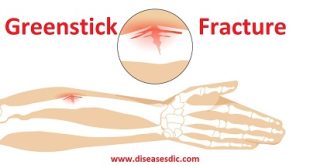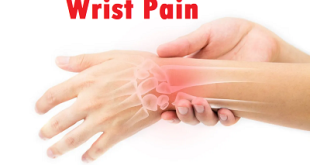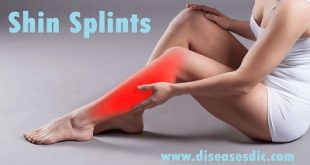Overview – Perthes Disease
Perthes disease is a condition of the hip joint that tends to affect children between the ages of three and 11 years. It is also known as Legg-Calve-Perthes disease or coxa plana.
The top end of the thigh bone (femur) is shaped like a ball so that it can fit snugly into the hip socket. In the case of Perthes disease, this ball (femoral head) is softened and eventually damaged due to an inadequate blood supply to the bone cells. Boys are more likely to develop Perthes’s disease than girls. In most cases, only one hip joint is affected.
Most children with Perthes disease eventually recover, but it can take anywhere from two to five years for the femoral head to regrow and return to normal, or close to normal.
Stages of Perthes disease
There are four stages in Perthes disease:
- Initial / necrosis. In this stage of the disease, the blood supply to the femoral head is disrupted and bone cells die. The area becomes intensely inflamed and irritated and your child may begin to show signs of the disease, such as a limp or different way of walking. This initial stage may last for several months.
- Over a period of 1 to 2 years, the body removes the dead bone beneath the articular cartilage and quickly replaces it with an initial, softer bone (“woven bone”). It is during this phase that the bone is in a weaker state and the head of the femur is more likely to collapse into a flatter position.
- New, stronger bone develops and begins to take shape in the head of the femur. The reossification stage is often the longest stage of the disease and can last a few years.
- In this stage, the bone regrowth is complete and the femoral head has reached its final shape. How close the shape is to round will depend on several factors, including the extent of damage that took place during the fragmentation phase, as well as the child’s age at the onset of disease, which affects the potential for bone regrowth.
Pathophysiology of Perthes disease
Rapid growth occurs in relation to the development of the blood supply of the secondary ossification centers in the epiphyses, causing interruption of adequate blood flow and making these areas prone to AVN. Interruption of the blood supply to the bone results in necrosis, removal of the necrotic tissue, and its replacement with new bone.
The bone replacement may be so complete and perfect that completely normal bone may result. The adequacy of bone replacement depends on the age of the patient, the presence of associated infection, the congruity of the involved joint, and other mechanical and physiologic factors. Necrosis may occur after trauma or infection, but idiopathic lesions can develop during periods of the rapid growth of the epiphyses.
Causes 0f Perthes disease
- Legg-Calve-Perthes disease usually occurs in boys 4 through 10 years old. There are many theories about the cause of this disease, but little is actually known.
- Without enough blood to the area, the bone dies. The ball of the hip collapses and becomes flat. Most often, only one hip is affected, although it can occur on both sides.
- The blood supply returns over several months, bringing in new bone cells. The new cells gradually replace the dead bone over 2 to 3 years.
Risk factors of Perthes disease
Risk factors for Legg-Calve-Perthes disease include:
- Although Legg-Calve-Perthes disease can affect children of nearly any age, it most commonly begins between ages 4 and 8.
- Your child’s sex. Legg-Calve-Perthes is up to five times more common in boys than in girls.
- White children are more likely to develop the disorder than are black children.
- Genetic mutations. In a small number of cases, Legg-Calve-Perthes disease appears to be linked to mutations in certain genes.
Symptoms of Perthes’ disease
The symptoms of Perthes’ disease include:
- An occasional limp in the earlier stages
- Stiffness and reduced range of movement in the hip joint
- Pain in the knee, thigh or groin when putting weight on the affected leg or moving the hip joint
- Thinner thigh muscles on the affected leg
- Shortening of the affected leg, leading to uneven leg length
- Worsening pain and limping as time goes by
Are there Complications that Can Occur?
The main focus in treating Legg-Calve-Perthes disease is to maintain as much bone in the femoral head and keep it as round as possible. The younger the child and the least amount of bone damage provide the child with the best outcome in keeping a healthy hip joint and avoiding pain, stiffness, and arthritis. It is important for children and parents to follow the instructions regarding activities and exercise provided by the specialists.
In more severe cases, some children require surgery to improve the hip joint movement and help reduce pain. If your child should require surgery, the doctor will discuss the type of surgery, recovery time, and expected results from the surgery.
Diagnosis and Tests
After discussing your child’s symptoms and medical history, your doctor will conduct a thorough physical examination.
Physical examination tests. Your doctor will assess your child’s range of motion in the hip. Perthes typically limits the ability to move the leg away from the body (abduction), and twist the leg toward the inside of the body (internal rotation).
X-rays. These scans provide pictures of dense structures like bone and are required to confirm a diagnosis of Perthes. X-rays will show the condition of the bone in the femoral head and help your doctor determine the stage of the disease.
Treatment and medication
Treatment of Perthes Disease is based on the age of the child and the severity of the disease. Very young children with few changes on their x-rays may require observation only. In all cases, children will be monitored with repeat x-rays for several years at least.
Non-operative Treatment
Medication may be used to help with swelling in the hip joint. Physical therapy may be ordered to keep the hip moving. Sometimes the family may be instructed on how to do these exercises at home as well as in the office with a physical therapist. In some cases, bracing or casting may be used to hold the affected hip in a good position (keep the ball in the socket). Often the cast is put on the in the operating room; your child’s doctor may inject some dye into the hip joint in order to assess the range of motion and proper placement. In some cases, the groin muscles become tight, limiting proper positioning; in these cases, a small incision is made to release the tightened muscle and get the hip into a better position. After about 6 weeks, the cast is removed and exercises are started again. Your child’s doctor may recommend a brace for part of the day to keep the hip in a good position.
Operative Treatment
In more severe cases and/or in the older child, surgery may be needed to place the ball into the socket of the hip joint. Sometimes this involves cutting the femur (thigh bone) or the pelvis, and sometimes, both. A metal plate and screws may be used to hold everything in place. Often the child is placed into a cast for about 6 weeks after surgery; after the cast is removed, physical therapy is started.
Home Treatment
Home care used along with medical treatment can be helpful. Light stretches can improve pain in the hip and leg, and your child may also use heat pads or ice packs. Your child’s doctor might recommend over-the-counter pain relievers like ibuprofen to relieve discomfort.
Exercise is important for your child’s recovery and overall well-being. However, your doctor may recommend that they refrain from high-intensity workouts. Exercises that include running and jumping generally aren’t recommended because they can put added stress on the hip and thighs.
Perthes Disease Prognosis
Sometimes those who have had Perthes disease require a joint replacement later in life. Children who have had Perthes are also more likely to develop early onset of hip arthritis. Your physiotherapist can aid in the detection and diagnosis of Perthes disease
 Diseases Treatments Dictionary This is complete solution to read all diseases treatments Which covers Prevention, Causes, Symptoms, Medical Terms, Drugs, Prescription, Natural Remedies with cures and Treatments. Most of the common diseases were listed in names, split with categories.
Diseases Treatments Dictionary This is complete solution to read all diseases treatments Which covers Prevention, Causes, Symptoms, Medical Terms, Drugs, Prescription, Natural Remedies with cures and Treatments. Most of the common diseases were listed in names, split with categories.








treatment of ossein mineral complex plus vit d can be given in this disease
what are the necessary drugs prescribed for back pain
Tylenol (acetaminophen), while not a nonsteroidal anti-inflammatory drug, is also a common over-the-counter pain reliever used to treat back pain. There are also prescription-only NSAIDs, such as celecoxib (Celebrex), diclofenac (Voltaren), meloxicam (Mobic), and nabumetone (Relafen).